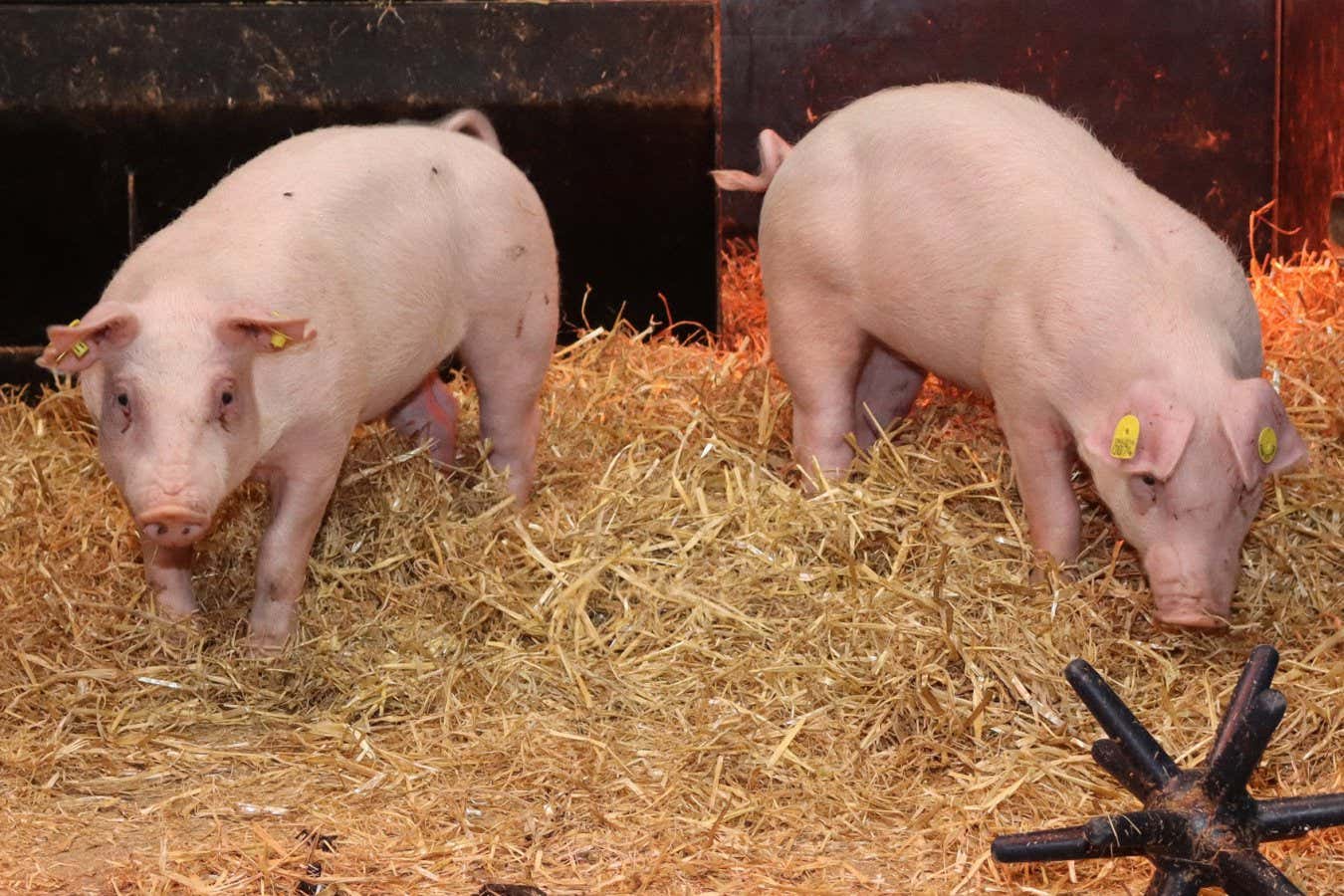

Gene-edited pigs resistant to classical swine fever
Simon Lillico
A tiny genetic tweak can make pigs completely resistant to classical swine fever, a major problem for farmers around the world. The same gene edit should also make cattle and sheep resistant to related viruses that plague livestock.
The widespread use of gene-edited pigs resistant to classical swine fever would improve animal welfare and increase productivity, which should lead to lower greenhouse gas emissions and lower prices in shops. “It would help towards sustainable livestock production, and with nice healthy, happy pigs,” says Helen Crooke at the UK’s Animal and Plant Health Agency.
Classical swine fever is a highly contagious viral disease that causes everything from fevers to diarrhoea and miscarriages, and can kill large numbers of pigs.
Although the disease has been eliminated in many regions, it occasionally re-emerges. Six million pigs were culled to halt an outbreak in the Netherlands in 1997, for instance, while Japan has been struggling to re-eliminate the disease since 2018.
Where the disease is present, vaccines containing live, weakened strains of the virus are used to protect livestock, but this is laborious and expensive. “Vaccination takes a lot of coordination and monitoring,” says Christine Tait-Burkard at the University of Edinburgh, UK.
Countries that vaccinate cannot export to disease-free regions. And any disruption to vaccination can lead to outbreaks – this happened in the Philippines recently, says Tait-Burkard.
But the classical swine fever virus has an Achilles heel. A bunch of the virus proteins are made as a single long strand of amino acids that has to be cut into pieces to become functional, and it relies on a pig protein to do the cutting.
Changing a single amino acid in this pig protein, called DNAJC14, can block the cutting. So Tait-Burkard and her colleagues used CRISPR gene editing to create pigs with this tiny change.
The team then sent some of the pigs to a secure facility, where Crooke and her colleagues sprayed live swine viruses into their noses. None developed any signs of infection – no symptoms, antibodies or detectable viruses – whereas normal pigs all fell ill.
“These animals were completely resistant to replication of the virus and remained happy and healthy throughout the study,” says Crooke.
The work was partly funded by a large international breeding company called Genus, which is now considering whether to commercialise the pigs.
Genus has already created gene-edited pigs resistant to another major disease called porcine reproductive and respiratory syndrome. These pigs have now been approved in the US, Brazil and other countries. Genus is awaiting approval in Mexico, Canada and Japan – key export markets for the US – before starting to sell semen to farmers.
Where gene editing is used to make tiny changes that could occur naturally, many countries are regulating it less strictly than conventional genetic engineering. Japan has already approved three gene-edited fish.
England is due to start approving gene-edited plants soon, but has yet to finalise the rules for livestock. These rules will almost certainly require that gene edits don’t affect welfare.
The team hasn’t seen any adverse effects in the pigs that are resistant to classical swine fever, says Simon Lillico, a team member at the University of Edinburgh, but further studies will be needed to confirm this.
He also notes that there are no such welfare requirements with conventional breeding. “A level playing field would be lovely,” he says. “There are certainly traditionally bred animals that have lower welfare associated with them.”
Viruses very closely related to classical swine fever cause bovine viral diarrhoea in cattle and border disease in sheep. The cattle and sheep diseases are less deadly, but do still affect welfare and productivity. The Edinburgh team is now investigating whether the change made in pigs will work in cattle and sheep too.
Topics:



